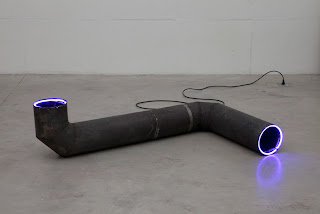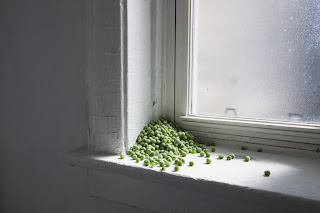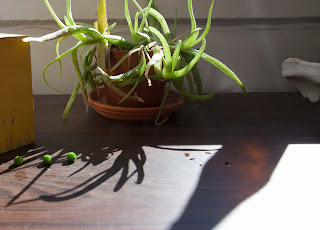http://www.cabinetmagazine.org/
cabinet magazine, an idiosyncratic and quality cultural weekly, features a column on color each issue; each issue featuring a different writer's reaction to a different color.
there are three examples of these columns on the portal
a whole issue of cabinet as a pdf (the scarlett cabinet issue)
and a cabinet color analysis, which is a meta project on the way that color has been textually used in the magazine (called cabinet color analysis).
so i'd like each of you to write a column on a color, take the cabinet columns as inspiration. post your columns onto the blog by the beginning of class next week. here are your assigned colors:
emilie - chartreuse
hyun - dark orange
shir - gainsboro
kalee - lilac
margareta - xanadu
Thursday, October 25, 2012
Thursday, October 18, 2012
color installation / due week 11/2
Batchelor speaks of the failure of language to convey color. Color can be thought of as 'pre-language' and 'without parts'...lets create a color work whose presence and color complicates an ability to even use language!
For class next week, make a color installation in our classroom.
No photographs need to be made for this assignment!
This is an in-person, visceral experience you are creating.
You can turn the lights out and we can cover the glass panel of the classroom to make the environment a more neutral lighting environment.
Light sources/prop ideas to get you started:
Dan Flavin:
Contemporary weird shower head:
Olafur Elliason
For class next week, make a color installation in our classroom.
No photographs need to be made for this assignment!
This is an in-person, visceral experience you are creating.
You can turn the lights out and we can cover the glass panel of the classroom to make the environment a more neutral lighting environment.
Light sources/prop ideas to get you started:
- lamps
- color bulbs
- laser pointers
- heat/light
- lighting gels
- other materials to 'color' light (scrims, drapes, clothing, etc)
- flash(es)
- anything and everything is at your disposal
Don't make a color clusterfuck! More color doesn't necessarily add meaning right?
Think about ideas/feelings you want to evoke
Think about subject (ideas referenced) vs subject matter (things we see)
Color can be realistic, emotive, symbolic, political, religious, be thoughtful about using color symbolically
Robert Irwin:
Dan Flavin:
Contemporary weird shower head:
Olafur Elliason
Yves Klein, IKB 191, 1962.
wiki: Although Klein had painted monochromes as early as 1949, and held the first private exhibition of this work in 1950, his first public showing was the publication of the Artist's book Yves: Peintures in November 1954. Parodying a traditional catalogue, the book featured a series of intense monochromes linked to various cities he had lived in during the previous years. Yves: Peintures anticipated his first two shows of oil paintings, at the Club des Solitaires, Paris, October 1955 and Yves: Proposition monochromes at Gallery Colette Allendy, February 1956. Public responses to these shows, which displayed orange, yellow, red, pink and blue monochromes, deeply disappointed Klein, as people went from painting to painting, linking them together as a sort of mosaic.
From the reactions of the audience, [Klein] realized that...viewers thought his various, uniformly colored canvases amounted to a new kind of bright, abstract interior decoration. Shocked at this misunderstanding, Klein knew a further and decisive step in the direction of monochrome art would have to be taken...From that time onwards he would concentrate on one single, primary color alone: blue.[5]
The next exhibition, 'Proposte Monochrome, Epoca Blu' (Proposition Monochrome; Blue Epoch) at the Gallery Apollinaire, Milan, (January 1957), featured 11 identical blue canvases, using ultramarine pigment suspended in a synthetic resin 'Rhodopas,' described by Klein as "The Medium." Discovered with the help of Edouard Adam, a Parisian paint dealer, the optical effect retained the brilliance of the pigment which, when suspended in linseed oil, tended to become dull. Klein later patented this recipe to maintain the "authenticity of the pure idea."[6] This colour, reminiscent of the lapis lazuli used to paint the Madonna's robes in medieval paintings, was to become famous as International Klein Blue (IKB). The paintings were attached to poles placed 20 cm away from the walls to increase their spatial ambiguities.
The show was a critical and commercial success, traveling to Paris, Düsseldorf and London. The Parisian exhibition, at the Iris Clert Gallery in May 1957, became a seminal happening.[7] To mark the opening, 1001 blue balloons were released and blue postcards were sent out using IKB stamps that Klein had bribed the postal service to accept as legitimate.[8] Concurrently, an exhibition of tubs of blue pigment and fire paintings was held at Gallery Collette Allendy.
Friday, October 5, 2012
Thursday, October 4, 2012
Art Expo
Laura Letinsky
Cool color of the wall and white dinner-cloth enhanced warm red/ yellow color of the peaches.
The wall has grey color with shades and undertone of cool green color
Alec Soth
Overall dark value with tone and shades. The white towels with the black cover of the bed create the contrast. The wall has very light brown color with medium value with undertone of warm yellow.
The wall and ground create monochromatic combination of the grey. The black and ginger (red mix with the orange) color has highest intensity.
The overall undertone of the photo is green/yellow with the tone. The combination of the green and the yellow/orange of the macaw is most visible and advance.
Yinka Shonibare
Multicolored dress (yellow, red, white) of the fox create chaotic combination of the colors. Intensive red of the background is advance.
The colors have the same brightness. The red color advance next to white and blue.
Josh Smith
The colors are highly saturated and create dynamic harmony. The warm red is advance next to green.
The warm red is advance next to black color. Colors have close value.
High saturated color with different value create dynamic harmony. Chaotic combination of the colors. The red advance next to yellow and light blue.
Subscribe to:
Comments (Atom)

















































